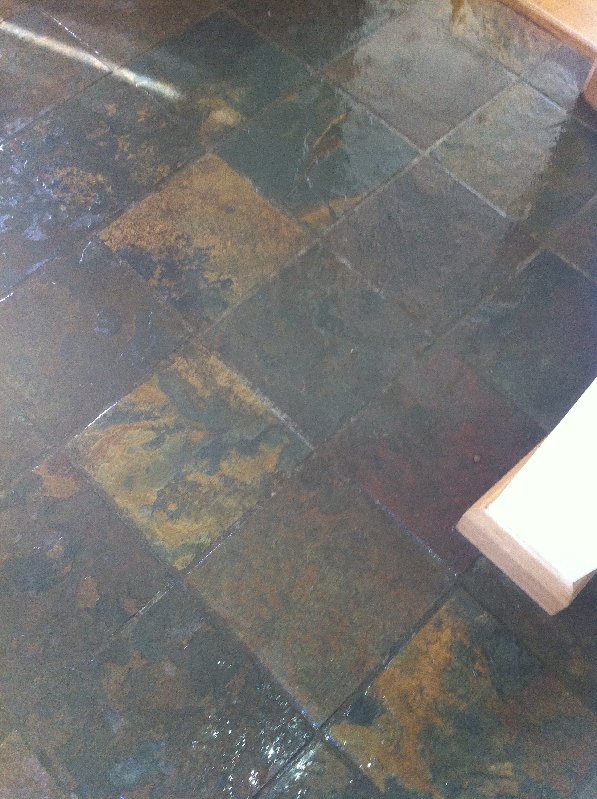Slate is a natural stone becoming increasingly popular. So, what is it exactly? Well, in geological terms it is fine-grained, foliated, homogeneous, metamorphic rock. How is it derived? Well, in short from original shale type sedimentary rocks made up of volcanic ash or clay through low grade regional metamorphism. Most people know it as grey in colour from the many thousands of roofs it is used on across the world. However, slate can come in varieties of colour even that derived from the same source location. For example, slate coming from North Wales can come in numerous shades of grey from very rich, deep and dark to that a lot paler in colour. It can also come in shades of cyan or green.
So, what is slate used for? Well, commonly it is used in roofing as roofing slates or something commonly called shingles in North America. One of the advantages of slate as a natural stone is that it has 2 lines of breakability – grain and cleavage – and this makes it very easy to split into thin roofing slates.
Very fine slate can also be used as whetstone to sharpen and hone knives. Historically, and especially during the 18th and 19th centuries it was also used as a material for blackboards in schools and also as individual writing slates. Slate is also a good electrical insulator and is fireproof and so was used in early part of the 20th century as a component in large electrical motors. Slate also possesses thermal stability and is still used as the base in snooker and billiard tables.
Today, slate is becoming increasingly popular for both interior and exterior flooring. Generally, slate tiles are fitted and set on mortar and then the tiles are grouted along the edges. A variety of sealers should be used on the slate tiles to improve durability, appearance, enhance stain resistance, reduce efflorescence, and increase or lessen surface smoothness of the tiles. We will talk more about this soon.
Copyright Ian Taylor and The Tile and Stone Blog.co.uk, 2013. See copyright notice above.


Reader’s Comments